
by Sandra Gulland | Dec 2, 2015 | Baroque Explorations, On Research, The Game of Hope, The Josephine B. Trilogy |
Tracking down facts can be a time-crunching task … but a very enjoyable one when the goal is in sight.
I began with a simple question: Where was Hortense’s father executed and buried? I think these were things she might have wanted to know.
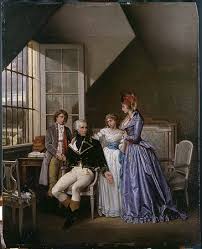
Portrait of Josephine and her two children, Hortense and Eugène, visiting their father in prison.
False leads
In the process, I found many wrong answers … which reinforces the common knowledge that the Net can’t be trusted. However, I knew enough to know when the answer was wrong, and kept looking.
In the process I ended up making a correction to a Wikipedia page … which rather thrilled me. Alexandre was defined, simply, as the lover of Princess Amalie of Salm-Kyrburg, a friend of Josephine’s who secretly acquired the land after the Revolution because her brother is buried there. Not only was it curious that Josephine and their children were not mentioned, but I very much doubt that Alexandre was Amalie’s lover. Other women, certainly, but not Amalie.
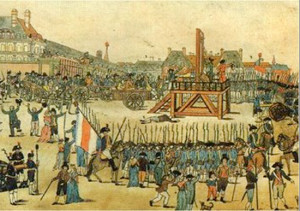
Place du Trône-Renversé—now Place de la Nation—where Hortense’s father was guillotined.
Alexandre was guillotined not in the Place de la Révolution (Place de la Concorde now) or Place de Grève (in front of the l’Hôtel-de-Ville), as if often claimed, but in Place du Trône-Renversé (now Place de la Nation), on the western edge of Paris. Apparently the other execution sites had become so bloody they had to find a new spot.
Mass executions at the height of the Terror
In a matter of about 6 weeks (from June 13 to July 27, 1794) 1306 men and women were guillotined, as many as 55 people a day. I imagine that it was hard work keeping the blade sufficiently sharp.
How to dispose of all the bodies?
It was also hard work disposing of the bodies. What is now the Picpus Cemetery was then land seized from a convent during the Revolution, conveniently close to Place du Trône-Renversé. A pit was dug at the end of the garden, and when that filled up, a second was dug. The bodies of all 1306 of the men and women executed in Place du Trône-Renversé were thrown into the common pits including 108 nobles, 136 monastics, and 579 commoners … .

The mass graves are simply marked.
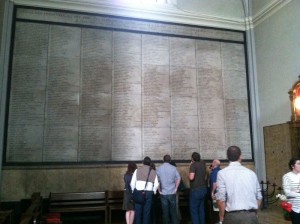
One of two wall listing the names and ages of the dead.

Le Cimetière de Picpus today.
Of those executed, 197 were women, including 16 Carmelite nuns, who went to the scaffold singing hymns.
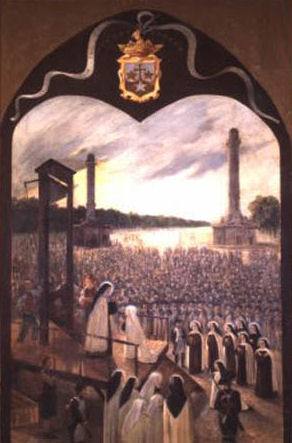
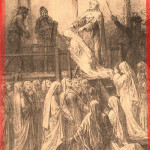
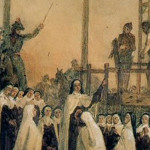
In all the research I’ve done in Paris over the decades, I’ve yet to go to either the Place du Trône-Renversé (Place de la Nation) or the Picpus Cemetery. I believe I’m due.

by Sandra Gulland | May 28, 2015 | Baroque Explorations |

(St. Florian Library at Melk Abbey in Austria.)
I’m at sixes and sevens today (a soon to be Mother-of-the-Bride, so understandable). Even my 100-word writing minimum is a challenge. At such times, I turn to organizing research. It’s important to do, and it doesn’t require creative energy.
Organizing research: recording citation information
My system for organizing research texts is simple. I keep the list of all books or magazine articles in a Notebook application, but any outlining program would do. Each book or magazine is assigned a number (I’m up to 1148, yikes), which I write in pencil in the book or on a post-it note which I stick on the inside front cover.

The application Notebook makes it possible for me to annotate the listings and add “stickers.” The double S sign shown here means that the book is in my library in Canada. I have stickers to indicate books that are in Mexico, books that go back and forth, library books and books that are on-line. For the on-line listings I will include a link in the citation.
Organizing research: organizing the bibliography
Then I moved the citation into the list of books I’m using for the WIP — the novel about Josephine’s daughter Hortense in this instance, and Notebook automatically alphabetizes them.
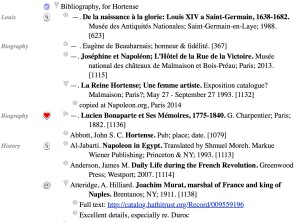
Organizing research: taking notes
And then the hard part: reading the texts and taking notes. Each reference I make to the book or magazine I reference with the text’s number, and page number:
[1145-58]
That way I can track back to the source, should I need to later.
See also:
For more on my research process and research in general, go to On Research, and specifically, My Research Method.
How do you organize your research?
SaveSave

by Sandra Gulland | Dec 30, 2014 | Baroque Explorations |
Stanford University in the U.S. and the Bibliothèque national de France have collaborated in creating the French Revolution Digital Archive, an astonishing collection of documents on the French Revolution.
A search of the image database revealed this delightfully imaginative sketch of Josephine:
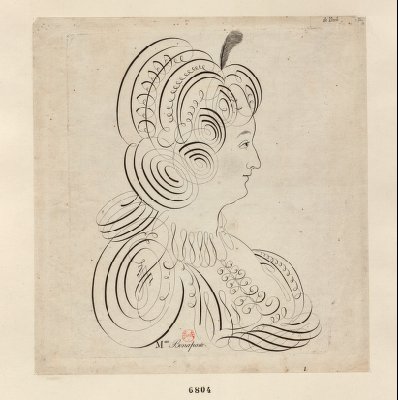
Here is one of Josephine’s arrogant first husband Alexandre:
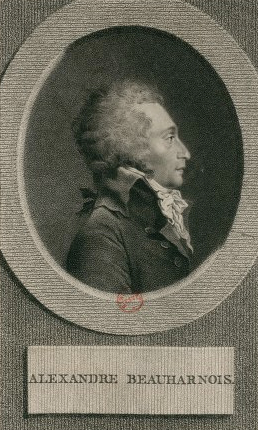
There are, of course, many images of Josephine’s second husband, Napoleon.
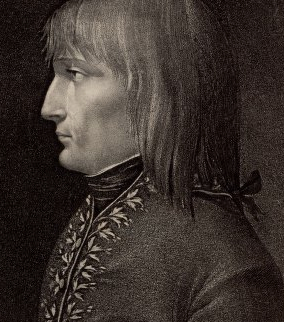
For more images, see my Pinterest boards on Josephine and Napoleon.

by Sandra Gulland | Dec 19, 2014 | Baroque Explorations, Recommended Books, Movies, Podcasts, etc., The Sun Court Duet |
It’s always a pleasure to see a historical film set in the Court of the Sun King. A Little Chaos, staring Kate Winslet, promises to be sumptuous. I always take issue with the portrayals because I have my own vision of these characters. None the less, I’m eager to watch it, especially to see how Versailles is portrayed in its early days.
The story of A Little Chaos
Madame Sabine De Barra (Kate Winslet) is an unlikely candidate for landscape architect of the still-to-be-completed Palace of Versailles. She has little time for the classical, ordered designs of the man who hires her, the famous architect Le Nôtre (Matthias Schoenaerts). However, as she works on her creation, she finds herself drawn to the enigmatic Le Nôtre and forced to negotiate the perilous rivalries and intricate etiquette of the court of King Louis XIV (Alan Rickman). But Sabine is made of strong stuff; her honesty and compassion help her to overcome both the challenges of her newfound popularity, and an unspeakable tragedy from her past, to win the favour of the Sun King and the heart of Le Nôtre.
Oh, how this makes me long to see such a movie about Claudette or Petite!
Since I wrote this post, and since A Little Chaos has come out there have been mixed reviews. One objection is that the real story of Le Nôtre is quite interesting enough without tarting it up with a love interest. He was the most steady and loyal of men.
From the Guardian: A Little Chaos: leads historical accuracy down the garden path
Only 6.5 on IMDb: too bad!
From the BBC: Costume drama A Little Chaos fails to blossom
Nonetheless, I can’t wait to see A Little Chaos. Have you seen it? What did you think?
by Sandra Gulland | Dec 1, 2014 | Baroque Explorations |
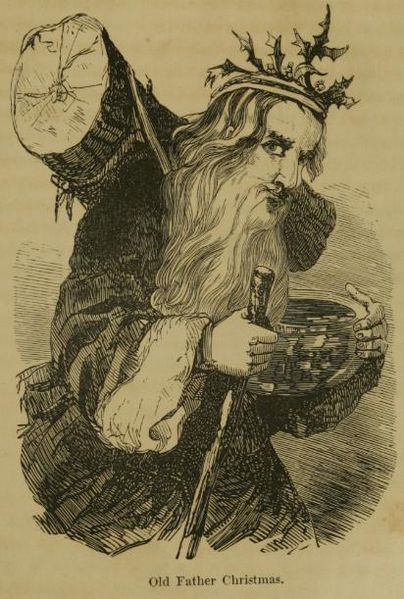
The original Santa is St. Nicholas of Myra. Although little is known about him (and some contest his very existence), he is generally believed to be a 4th century Greek bishop and saint.
Because of a number of miracles attributed to him, he is also known as Nicolas the Wonderworker (which I love). His feast day is traditionally December 6.
How did St. Nick become a gift-giver?
Nicolas had a reputation for secretly giving gifts. One legend has it that he heard of a man in his parish who couldn’t afford dowries for his three daughters, and thus intended to send them to a brothel.
St. Nicolas, at night, threw three bags of gold in their window (one for each girl), and thus began the tradition of Santa’s bag of gifts. (Who knew they were to save us from a brothel!)
Over the centuries, Santa evolved. In the 17th century, the Dutch celebrated Sinter Klaas (or Sinterklaas), who rode a flying white horse. Becoming secular, he now arrives on Christmas (rather than December 6). He no longer wears the robes of a bishop, but a red, fur-trimmed suit (not unlike a red bishop’s cloak, in fact). He’s round and jolly, no longer thin, and he drives a team of flying reindeer, rather than the flying horse.
Good Saint Nicolas is the official patron saint of sailors, merchants, archers, children, students, and even (curiously) thieves. Today he seems to have also become the adopted patron saint of Capitalism. It’s refreshing to go back to his origins, to the kindly bishop who secretly put coins in the shoes of the impoverished.
For details of a French 17th century Christmas, see The Huguenot Sword on FaceBook.
by Sandra Gulland | Nov 28, 2014 | Baroque Explorations |
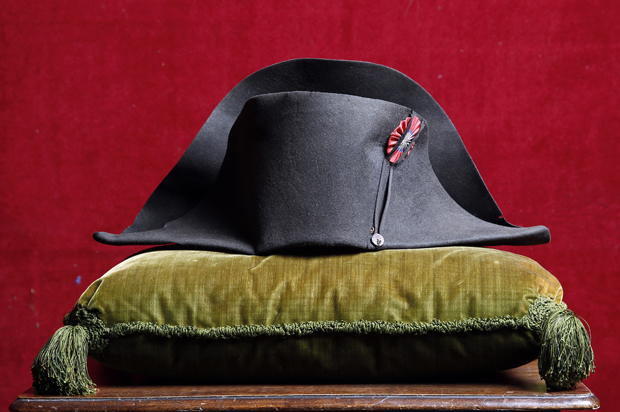
Both Josephine and Napoleon have been much in the news, of late. One of Napoleon’s hats sold at auction for over 2 million dollars.
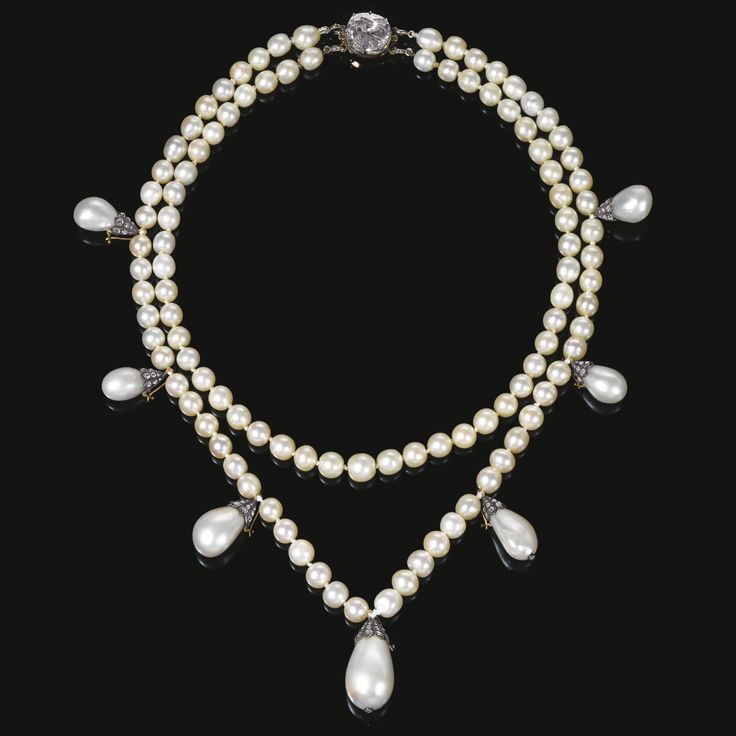
A pearl and diamond necklace believed to have been owned by Josephine went for almost 3.5 million.
And, just today, a letter Josephine wrote—a letter heavily edited by Napoleon (one presumes)—sold for $33,000.
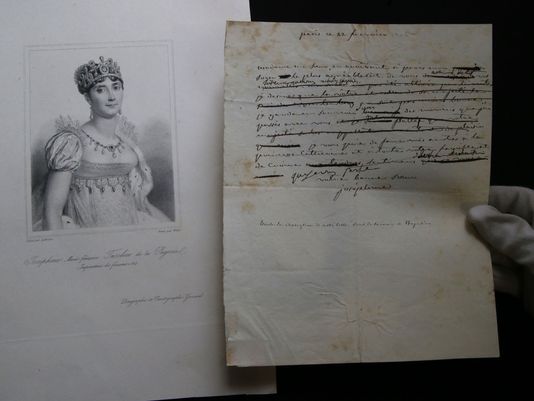
This letter is seen as showing how subservient women were in the 18th and 19th century, but I don’t really see it this way. This was a letter to Queen Charlotte of Wurtemberg.
[blackquote] According to manuscript specialist Thierry Bodin, “In this instance, Napoleon wanted to make a political union with the Charlotte’s daughter, so he dictated what she could say.”
I imagine that Josephine wrote a draft, fully intending to show it to Napoleon before sending out a revised copy. My husband and I often do the same thing—don’t you? I imagine that there were times when Napoleon consulted Josephine about what to say, how to respond, as well.
It’s thrilling to see such artifacts emerge. In the case of letters, I only hope that they are made digitally available to researchers.






















